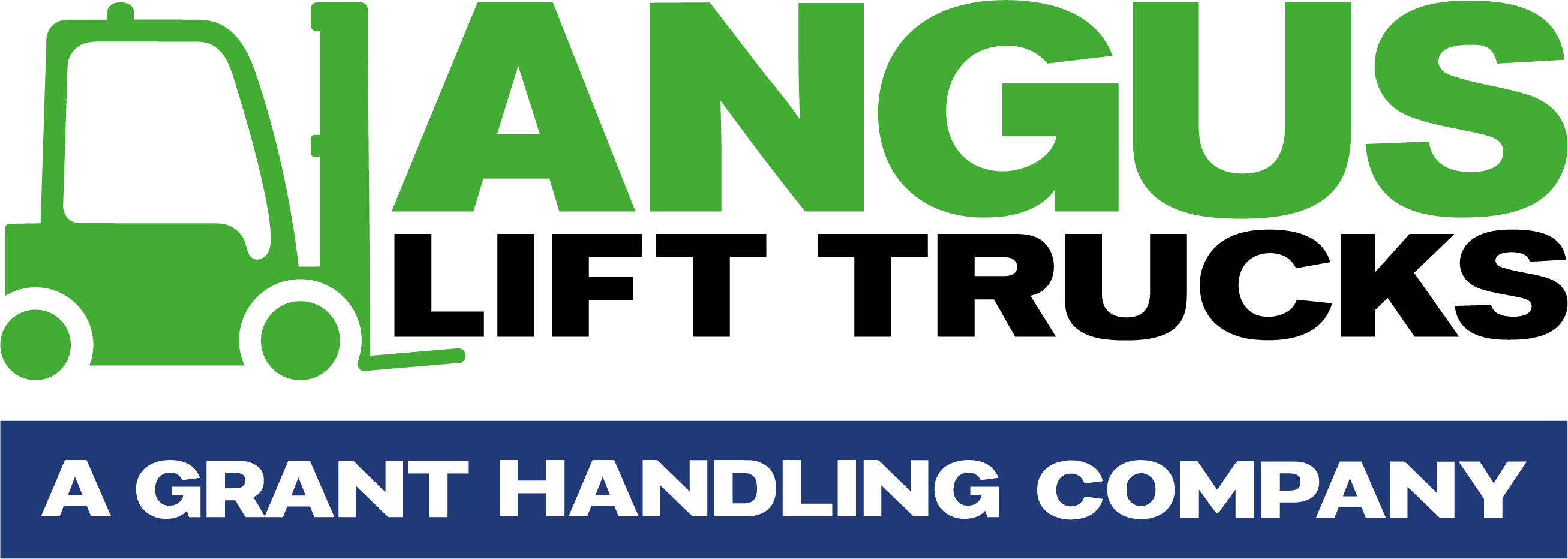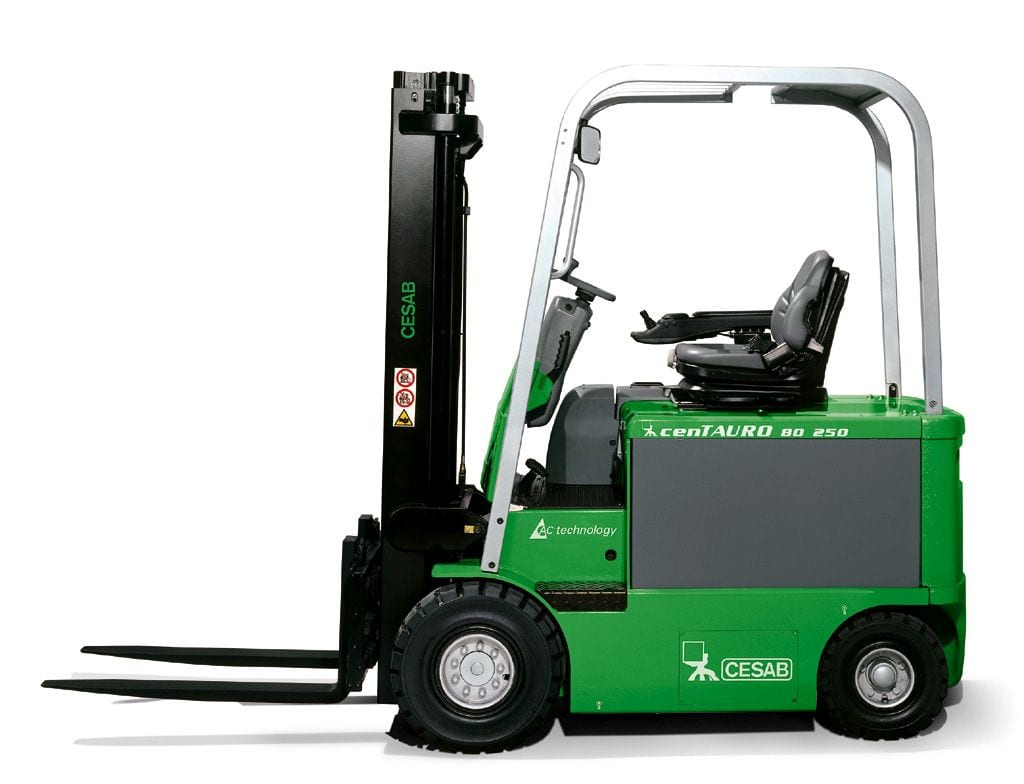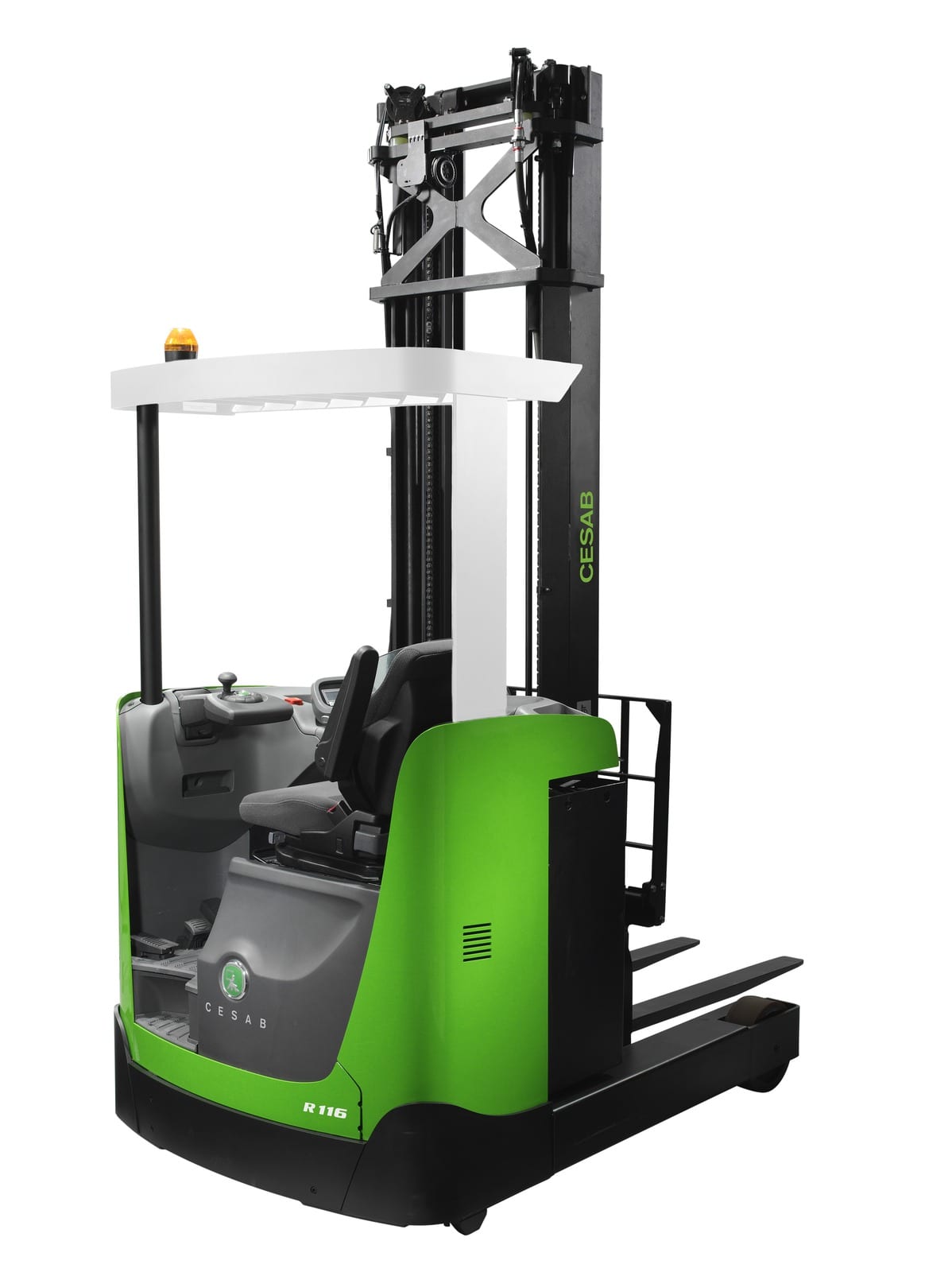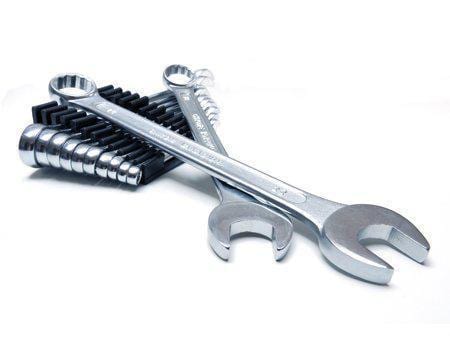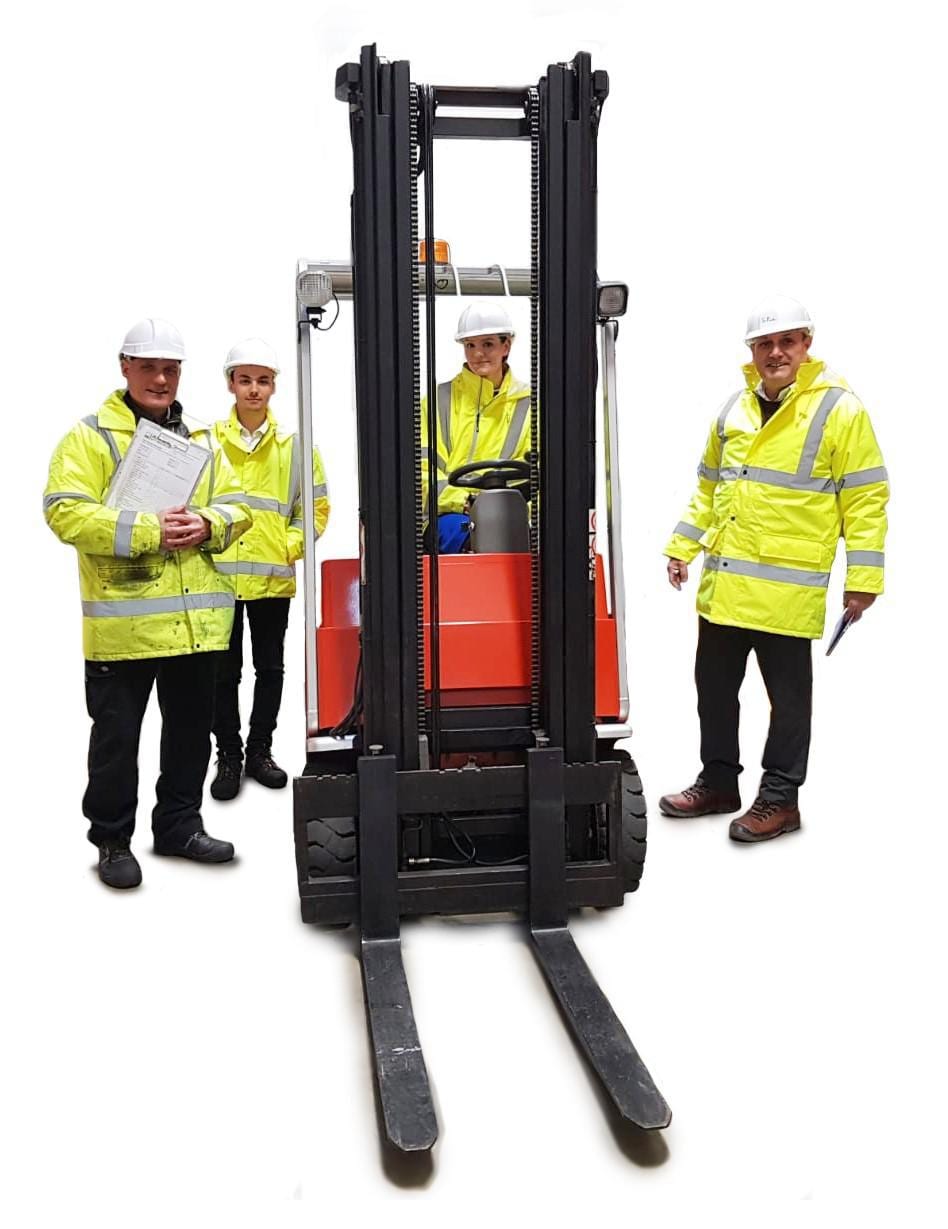Learning how to operate a forklift machine can help you land a job, or gain a promotion. But if you’re new to the field, you might need help to start. Forklifts are heavy machinery, so naturally, there’s some training you’ll have to go through before you’re ready to work.
In this article, Angus Lift Trucks, leading provider of forklift sales services, forklift rentals, maintenance, and training, will answer the most common questions people ask about getting your forklift license in the UK. For example, do you need a license for a forklift? How long is a forklift license valid for? And does a forklift operator need a driver’s license?
Start by listening to our podcast episode on the most important stuff you need to know and be aware of when it comes to formal forck truck training and certifications:
Read on below to learn how to kickstart your job as a forklift operator.
How to Get a Forklift License in the UK
Before we answer common questions, we’ll give you a summary of the licensing process. There is no single national standard to train for a forklift license in the UK. Instead, you will need to look for a local training and certification program.
You can apply for a job with no experience in some cases, and the company will offer training included. Otherwise, you may have to pay and enroll in a course yourself.
Forklift training programs will teach you skills such as:
- Basic Operation
- Carrying Capacity
- Machine Limitations
- Inspection Processes
- Safety Protocols
- And more
You may be able to learn it within a week, and they’ll supply you with a certificate or ‘license’.
Keep in mind that a legal training program must have accreditation. We’ll look at some of the institutions that are allowed to accredit training programs in the next question, however, if you need more information you will find our guide on forklift training useful.
Do I Need a Forklift License to Drive a Forklift?
You do not necessarily need a license to drive a forklift. However, you need to attend an accredited forklift training program.
The Health and Safety Executive (HSE) has noted 6 organizations that can legally accredit forklift training programs. These organizations are:
- Association of Industrial Truck Trainers (AITT)
- Independent Training Standards Scheme and Register (ITSSAR)
- Lantra Awards
- National Plant Operators Registration Scheme Ltd
- Road Transport Industry Training Board (RTITB) Ltd
- Construction Industry Training Board, (CITB)
These sites may have pages to show you which providers are accredited in your area. So, you don’t have to worry about travelling far to get your training.
Under section 2 of the Health and Safety at Work Act, employers are required to give you adequate training to do your job safely. So, whether you’ve taken a forklift course or not, your employer may be breaking the law if they have you begin working with no training.
You may have to operate a different type of forklift or navigate a different facility with that employer. So, even if it’s only a day’s refresher, it’s valuable to ensure your employer reviews safety precautions with you.
You can read more about the minimum requirements to safely operate a forklift under L117.
At What Age Can You Get a Forklift License?
The HSC Approved Code of Practice and Guidance says that “children under minimum school leaving age should never operate lift trucks.”
The minimum school leaving age is 16 years old. However, many companies will require you to be at least 18 years old. Additionally, you must be at least 18 years old to work in ports.
In general, industrial sites like factories cannot employ children under the minimum school leaving age. The exception to this rule is if the child is there with an approved work experience program. Even then, the child shouldn’t operate the forklift directly.
How Much Does it Cost to Get a Forklift License in the UK?
The cost of getting a forklift license in the UK varies a lot. Factors like how much experience your workers have, and the types of forklifts you’re working with will change it.
As an estimate, you can expect to spend between £200 to £800 per person. However, prices can go as low as £100 per person if you need a refresher or conversion course. It’s the programs for novices that will often be the most expensive.
Can you Get a Forklift License Without a Driver’s License?
Yes, you can obtain a forklift license without a driver’s license. However, if you will be driving it on public roads, you will need a full UK driver’s license.
You would also need to register the vehicle with the Driver and Vehicle Licensing Agency, and the forklift would become taxable. You can read more about these regulations on Gov.UK’s Work Trucks page.
Forklifts don’t drive the same as standard vehicles. They tend to steer only from the back wheels so that the front wheels can take the burden of extra weight. Their size, weight, and dimensions combined mean you’ll be driving them slowly.
However, most forklift drivers will first learn how to operate it within a factory or warehouse setting. Once you take it to public roads, such as for a construction project, you will need a full license for public safety.
Looking to Buy or Hire

a forklift?
With 35+ years of experience, we offer our most competitive rates, flexible finance, 4h service promise & more!
Where Can I Go to Get my Forklift License?
As long as a program has accreditation from one of the 6 organizations the ESH outlines, then you can obtain your license there. Thankfully, that means that it’s easy to access a program across the UK.
If you work with a company that’s offering you training, you may be able to get your forklift license while training on-site. If not, you may need to go to the provider’s facility for training.
Once you’re on-site, you can expect to have a teacher demonstrate the forklift live for you. They will show you what pre-use inspection looks like, and each piece of the machinery. For example, you’ll learn which levers tilt and raise the lift.
Your instructor should also address common accident prevention. Common accidents include forklift rollovers, collisions with objects, or emissions poisoning. Your forklift could either be battery-powered, or gas-based. In either case, you may learn how to recharge them safely.
Whatever the case, you can expect to learn forklift management on the site where you’ll be working.
How Hard is it to Get a Forklift License?
Obtaining a forklift license isn’t very hard. However, you should keep some of the minimum requirements in mind. Physically, you should be in good health and have the endurance to operate and move heavy machinery for long periods.
A good forklift driver also pays attention to instructions and specifications. For example, you will have to accurately measure carrying capacity loads to load on the forklift without tipping the machinery.
Some estimates show that there are 8000 reported accidents with forklifts a year in the UK. You can prevent many of these accidents with proper training and supervision. So, although it’s not hard to get your license, you should still always be careful and mature about your equipment.
How Long Does a Forklift License or Certification Last?
You may wonder ‘Does a forklift license expire?’ the way a driver’s license does. The answer is that it doesn’t.
However, that doesn’t mean you don’t need to maintain your training. UK law recommends that you refresh your training every 3 to 5 years. This routine training helps you adapt to new safety protocols and machinery updates.
You should know that your employer is not legally required to offer you refresher training, though. This information might affect your decision of who to work with if you’re currently on the forklift job hunt.
How Much is it to Renew a Forklift License?
Although you don’t need to officially renew the license, you would have to pay for a refresher course. Expect to pay at least £100 for a full day of training.
Some training programs may require more days, though. For example, conversion courses may cost slightly more than refresher courses. These are intended to teach workers to transition from one type of forklift to another.
Some of the types of forklifts workers may need to learn include:
- Counterbalance
- Rough Terrain
- Pedestrian Pallet Truck
- Multi-Directional
- VNA
- Reach
- Cherry Picker
- Vehicle Mounted
- Scissor Lifts
- Pivot Steer
- Telescopic Handlers
So, you should ask your training provider what machinery their courses can cover. With that information, you can determine the most valuable course for the cost. For more information, you may want to read our article on the different types of forklifts and their applications.
How to Get a Forklift Job with No Experience?
Thankfully, you can get a forklift job even if you have no training yet. Some jobs will offer to train you themselves, as long as you have an appropriate resume.
Any previous work you’ve done in areas that need forklifts, such as airports, store stocking, or farms can all help you look like a suitable candidate.
You should also show that you’re physically healthy. After all, a forklift operator job will need you to have a full range of motion, and good eyesight.
Although you may consider taking a course solo, we advise against it. Programs should be specific to the exact equipment and area you’ll be working with. So, unless you know exactly where you’ll be working, it may be a waste of your resources.
Looking to Buy or Hire

a forklift?
With 35+ years of experience, we offer our most competitive rates, flexible finance, 4h service promise & more!
How to Find my Forklift License Number?
Depending on your program, you might be able to see your forklift license number digitally or on a paper certificate. Some of the accreditation organizations, such as RTITB, will then let you search for operators by something like their registration number.
However, there is no centralized state system for registering forklift drivers. If you’ve lost your registration number, or haven’t obtained it, contact your training provider directly. What your license number looks like might vary on the organization they’re accredited with.
Let’s say you’re moving from one job to another. If you can’t obtain your proof of training from your original employer, explain the situation to your new one. They may decide to reassess or train you, which is helpful as a refresher course.
You may also like
Conclusion
Altogether, there is no centralized state system to offer training or licensing for forklifts. However, the state does have regulations to ensure that you’re safe, no matter what working environment you’re in.
The good thing about this system is that finding forklift training is easy to access. You can find a provider near you and have a license within a week.
Once you have a job, you may enjoy benefits like health insurance, vacation time, and easy daily tasks. The job is largely easy to do, and a rewarding way to practically serve your community.
How to Become a Forklift Operator
Forklift operators are essential employees in several sectors that include construction, warehousing, and manufacturing. Operators do not need to meet academic qualifications beyond a lower secondary education, but you do need a training certificate to operate a forklift in the U.K.
If you’re interested in becoming a forklift operator, here’s what you need to know about training. The training school covers everything from safety and general maintenance to how to load and operate a forklift. Passing the course is one of the requirements you must meet, along with a few other criteria.
- You must be 20 years of age and pass an eye exam.
- Pass the required training courses.
- Pass a practical and knowledge test.
- Be current with any applicable fees.
When you meet the criteria, you are issued a light or heavy tractor and mechanical license, depending on the course level.
The difference between light and heavy tractor licenses is the type of equipment you are certified to operate. A light tractor and mechanical equipment license allow you to use equipment weighing under 7.5 tons when empty.
A heavy tractor and mechanical equipment license let you operate both light and heavy equipment. Without either license, you can only operate a forklift under supervision by a certified instructor.
What to Expect From Forklift Training
Operators face multiple challenges on a forklift. Avoiding obstacles and pedestrian traffic and learning to balance a load are a few aspects covered in a forklift training class. You’ll also have the opportunity to learn how to operate other types of mechanical equipment like a scissor lift and cherry picker.
Learn to Counterbalance
Knowing how to balance a load on a forklift is an essential skill. Unequally distributed weight can result in the equipment tipping over or the cargo falling off. Both scenarios can result in workplace injuries.
You’ll learn how to evenly distribute heavier weights to ensure the load is equally balanced across the forks.
Reach Forklift
A reach forklift is used in warehouses and other areas with narrow aisles. The wheels are located underneath the cab allowing it to make tight turns in cramped spaces. A standard forklift has wheels at the front and back of the cab.
Certification for a standard forklift does not transfer to reach equipment. The wheel placement differs and requires additional training for safe operation. Operators will learn how to safely accelerate and decrease speed and turn around without bumping into co-workers and stationary objects.
Pivot Steer
A pivot steer is designed similarly to a standard forklift with one exception. The mechanical equipment is designed so that the mast can pivot 90-degrees from left to right. Pivot steers are most commonly found in warehouses with aisles less than 1.8 meters wide. The forks also raise and lower to reach higher racks.
Training on this machine focuses on safety and operation, paying attention to the equipment’s pivot function.
Operate Over Rough Terrain
Forklifts are essential equipment on a construction site, but the rough terrain presents unique hazards. The training course focuses on handling, stability, and how to safely lift loads on uneven ground.
You will also learn how to inspect the forklift before starting a task and the general safety rules that apply to active construction sites. The course also covers how to refuel a forklift without creating a safety hazard.
VNA Forklift
A very narrow aisle forklift (VNA) works in the same spaces as pivot steer and reach equipment. The difference is in the design. Referred to as man up, the operator sits higher-up in the carriage, giving them an unobstructed view of the pallets on the forks. It improves efficiency and safety, especially in warehouses with a high racking system.
Certification on a VNA can open up additional opportunities beyond operating a standard forklift.
Cherry Picker
Cherry pickers have multiple uses from warehouses to fields and even on movie sets. The equipment includes a hydraulic crane with a platform on the end. The platform raises and lowers employees that need to reach higher places like shelves or overhead cables.
As with other types of equipment, certification is necessary to operate a cherry picker. You’ll learn how to safely work to lift loads on uneven ground, safely move the battery-powered basket, and recognise any potential hazards.
Scissors Lift
The aerial platform is primarily used for ceiling work, hanging signs, and performing other indoor maintenance tasks. The lift uses a boom to raise the attached platform, usually between 6 – 15 meters. Due to the heights the platform can reach, certification is a requirement to operate a scissors lift.
In the course, you’ll learn safety precautions and how to keep the load balanced. Potential hazards are also covered, along with how to avoid potentially dangerous situations. Certification on a scissors lift gives you additional career options beyond warehousing or outdoor construction sites.
Telescopic Handler
Telescopic handlers are also called zoom booms or a telehandler. It’s a versatile piece of equipment used in agriculture and construction. The forklift has telescopic arms that extend or retract when lifting loads. It can act as a small crane with the ability to shift or suspended heavier weights.
Certification is required to operate a telescopic handler. The course focuses on safety and proper operation. You’ll understand how to safely raise and lower the boom and forks, along with techniques to balance heavy loads.
Pedestrian Pallet Truck
Also known as a pallet jack, it’s designed for a primary purpose. It lifts and moves pallets using specially tapered forks. The forks slide in underneath the pallets, and a pump handle raises or lowers the arms. You find pallet trucks in warehouses and other storage areas.
During pallet truck training, you’ll learn basic operational skills working with various load weights and sizes. You’ll also know how to perform safety checks and operate the equipment around obstacles and other employees. At the end of the course, you can deposit loads, stack and re-stack pallets, and safely manoeuvre the load from one location to another.
Multi-Directional Forklift
A multi-directional forklift is a versatile machine. It combines the features of several different forklifts. It’s a counterbalanced forklift, a VNA, and a side loader. You can lift and move heavy pallets and longer loads. A multi-directional forklift can also function in tight spaces. With the ability to work indoors and outside, you often find these forklifts on larger sites.
Multi-directional training ensures you can safely operate all of the forklift’s various functions. You also need certification to legally operate one at job sites in the U.K. A VNA license does not apply to this machine, even though it shares some of the same aspects.
In the course, you’ll learn safety and operational procedures. The class also covers potential hazards. With a multi-directional license, you can safely operate the forklift in warehouses and out on job sites.
Vehicle Mounted Truck Lift
A vehicle-mounted truck lift is a standard piece of equipment used for industrial applications. Nicknamed the Donkey, it’s a workhorse of a machine with multiple applications. It comes with an open bed, similar to a truck bed designed for carrying heavy loads. On the back are the forklift arms. Some models mount to a truck bed.
These forklifts are often used during construction to reach roof lines or to work on high utility wires.
Due to the concerns over aerial lifting, safety is a significant part of the training course. Learning how to avoid potential hazards is part of the training course. You also get an understanding of how balance plays a role in safety. You’ll go over how to prevent tip-overs, falls, and structural problems. The class also goes over the tools you need to work at greater heights.
Summary
If you want to be a forklift operator, you need a license. It is a legal requirement in the U.K. that’s unavoidable. You also need certification for each type of forklift you intend to operate.
When you consider how many types of forklifts there are, it can seem overwhelming. You don’t need to become certified for everything at the same time. Instead, take the courses for the equipment that’s used at your workplace. You can always go back and take additional classes if you decide you want to operate a cherry picker or vehicle-mounted truck lift.
How to Get a Forklift License in the UK
In this section, we’ll go over some tips to help you confidently ace your forklift theory test.
1. Safety
As with any large machinery, safety is of utmost importance.
Forklifts are large, heavy, and require a significant amount of energy to operate. If you run into anything, the amount of force transferred is enough to skewer both the machine and a man.
2. Prevention Is Key
You are a forklift’s number one safety feature. To prevent accidents, you must remember that they are ultimately your responsibility.
For your forklift theory exam, it’s essential to know how to check your mirrors and operate the horn properly. Always staying aware of your surroundings while you drive the forklift is crucial. Monitor your speed, load position, and foot traffic, as well.
Even if you think a particular area doesn’t require much attention, you should notice everything. One minor distraction has the potential to damage the machinery or harm a person’s life.
3. Understanding the Key Parts of a Forklift
Having an in-depth understanding of the main parts of the forklift is another crucial tip to passing the test.
A forklift’s three key parts are the hydraulic lift, the overhead guard, and the body. The forks and mast attach to the lift. When it comes to the forklift’s interior, you’ll find a steering wheel, brake and gas pedal, and controls to tilt back/forth and lower/raise.
4. Operating the Forklift
To pass your forklift test, you must know how to drive and operate a forklift properly. Trainers will look for understanding in even the most minor details.
It’s important to remember to maintain load on the uphill side of slopes. Almost every driver forgets this rule at least once.
If you’re traveling with a load on a flat area, there’s typically no reason to raise it above eight inches. Once you raise it, slightly shift the forks backwards to situate the load in the most secure position.
5. Learning Forklift Controls
It’s important to show your trainer that you know how to use forklift controls. Most of the time, the trainer will look for an understanding of the brake, the parking brake, the accelerator, the tilt level and hoist, the direction lever, and internal combustion trucks, the itching pedal.
During your training, the trainer will direct you to the proper use of these controls to learn about steering and traveling.
6. Entering and Exiting
The trainer will expect you to know the exact courses of action for entering and exiting the forklift. To pass your test, you must understand these rules.
When stepping on the forklift, you should always use three points of contact. For starters, many think the steering wheel is a point of contact, but it isn’t. After sitting down, fasten your seat belt and start the engine.
When stepping off the forklift, find an area with no traffic and park. Before switching the trunk to neutral, haul down the forks until they’re flat on the ground. Then, secure the parking brake and turn off the engine. You can now safely and securely exit the forklift.
7. Signaling Turns
As with any vehicle, you should use a signal light when you turn. Even if there are no other cars or trucks around, you should still use your signals.
8. Weights and Loads
When lifting a load, the heavy end of the load should be as close to the mast as possible. Balance the load’s weight on either side. If the forks are overloaded, the forklift’s back wheel will begin to raise off the ground.
Always be aware while driving on long, wide roads, and decrease your speed for safety.
9. Risk of Tipping Over
Another key part of passing the forklift theory test is knowing what to do in the case that it tips over. First, firmly hold the steering wheel and prepare yourself to tip. Then, fix your feet into a steady position and lean in the opposite direction.
10. Unloading
When it comes to unloading, bring the truck to a halt and ensure that the floor isn’t inclined. Then, designate a specific height to lower the loads and try to prevent bumping into other objects while doing so. Now you can position the load for stacking and slowly back up.
Can you get a forklift license without a driver’s license?
You do not have to obtain a driver’s license to operate a forklift in the UK unless you are planning to drive the forklift on a public highway.
Overall, you get more out of the classes when you take your time, and you also have a better idea of which certifications apply to your field. And, you can trust Angus Lift Trucks to deliver any RTITB and CPC accredited forklift training both on-site and off-site. We have over 35 Years of experience in providing fork truck training courses in Leicestershire, Nottinghamshire, Northamptonshire, Birmingham, Warwickshire, Derbyshire, East Midlands & West Midlands.
This post is also available in:
Français
Deutsch
Italiano
Português
Español
Български
Hrvatski
Eesti
Latviešu
Lietuvių
Polski
Português
Русский
Slovenčina
Slovenščina
Türkçe
Українська
Albanian
Čeština
Dansk
Nederlands
Ελληνικά
Magyar
Română
